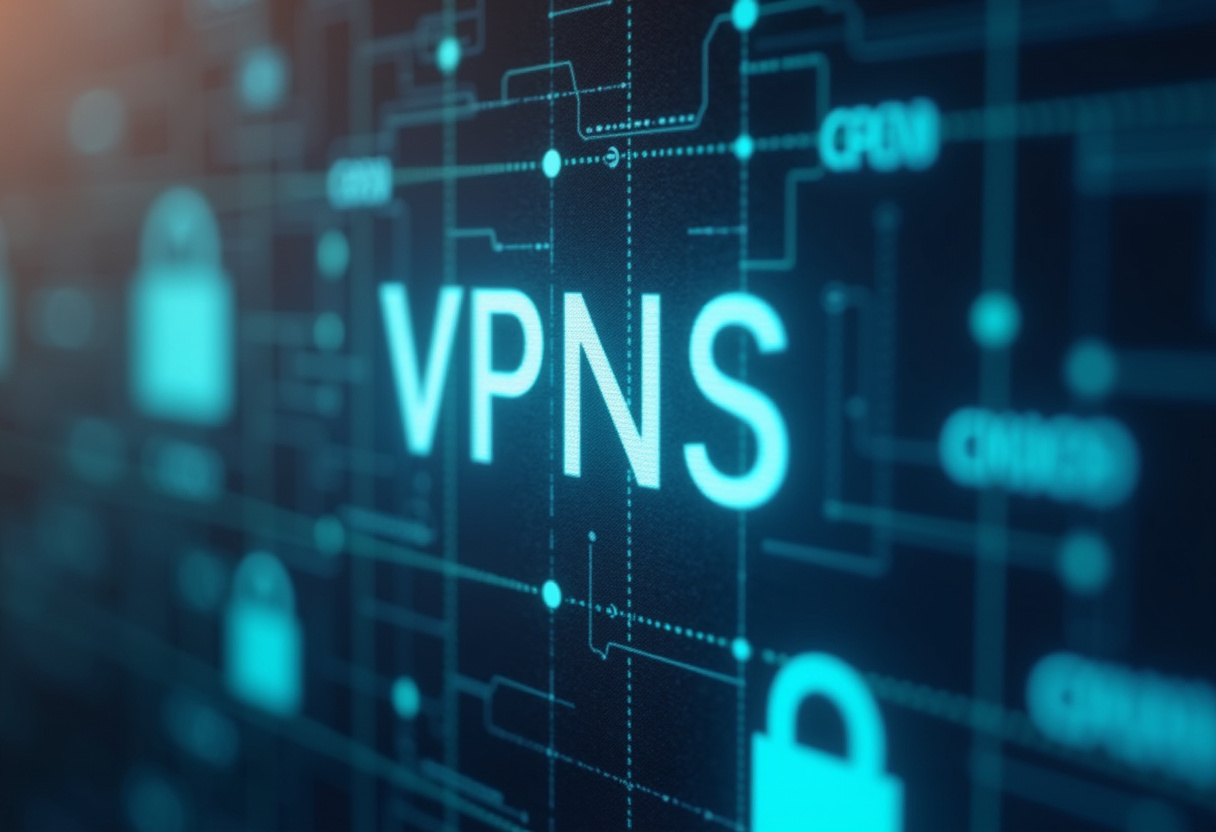VPNs for Wildlife Sanctuaries: Safeguarding Ecological Data

Table of Contents
VPNs for Wildlife Sanctuaries: Safeguarding Ecological Data
In an era marked by unprecedented technological advancements, wildlife sanctuaries, often perceived as bastions of untouched wilderness, are becoming increasingly reliant on digital tools for conservation efforts. From remote sensors tracking animal movement patterns to sophisticated databases cataloging decades of ecological research, technology is now integral to effective conservation management. However, this digital transformation introduces significant vulnerabilities.
The sensitive ecological data and personal visitor information held by these sanctuaries are prime targets for cyber threats, necessitating robust security measures. Virtual Private Networks (VPNs) have emerged as a critical solution, providing a secure and encrypted tunnel for data transmission, thereby safeguarding invaluable ecological assets and ensuring the integrity of conservation initiatives. A wildlife sanctuary VPN essentially creates a secure, private network connection across a public network, such as the internet.
This encrypted tunnel scrambles the data transferred between devices and the sanctuary's network, making it unreadable to unauthorized parties. This is particularly crucial when transmitting sensitive information, such as the location of endangered species, breeding patterns, habitat assessments, and research findings, all of which are vital for informed conservation strategies. The compromise of such data could have catastrophic consequences, potentially leading to increased poaching activities, habitat destruction, or the disruption of carefully planned conservation programs.
Beyond internal operations, the need for stringent ecological data security extends to external collaborations. Wildlife sanctuaries frequently collaborate with research institutions, governmental organizations, and international conservation bodies, involving the exchange of highly sensitive data. A VPN guarantees that these data transfers occur securely, preventing interception or manipulation by malicious actors.
This shields collaborative research projects, ensuring the integrity of data used for long-term planning and conservation management decisions. Furthermore, implementing a VPN infrastructure enhances the overall operational efficiency of a wildlife sanctuary. By providing a secure and reliable network connection, it streamlines communication between different departments, facilitates remote access for researchers and staff operating in the field, and optimizes the collection, analysis, and sharing of critical data.
This improved efficiency translates into more effective conservation actions and a better allocation of resources. Many wildlife sanctuaries collect visitor information for diverse purposes, encompassing visitor management, safety protocols, promotional activities, and fundraising initiatives. This data, including personal details, travel histories, and potentially financial information, is also susceptible to cyber threats.
A wildlife sanctuary VPN helps ensure comprehensive visitor information protection by encrypting data transmissions between visitors and sanctuary databases, preventing unauthorized access and shielding personal privacy. Integrating a well-designed VPN implementation with existing security systems, such as firewalls and intrusion detection systems, provides comprehensive network security for wildlife sanctuaries. This layered security approach minimizes the risk of successful cyberattacks and protects the sensitive ecological data and visitor information entrusted to these sanctuaries.
Therefore, investing in a wildlife sanctuary VPN is an investment in the future of conservation, ensuring that these valuable ecosystems are protected not only from tangible, physical threats but also from the increasing risks of the digital realm. The ultimate effect of the implementation of VPNs is ensuring the continuous and smooth operation of the sanctuaries, and therefore ensuring a safe haven for both flora and fauna within their boundaries. The peace of mind that the technological advancements provides in a day and age as this is invaluable and has a huge impact in the ecological chain.
The selection and implementation of a suitable VPN solution tailored for a wildlife sanctuary requires a multifaceted approach encompassing careful consideration of specific needs, existing infrastructure, and long-term goals. The first crucial step is a thorough assessment of the sanctuary's unique security requirements and vulnerabilities. This involves identifying the types of data requiring protection, potential threats the sanctuary faces, and the desirable level of security to defend against those threats.
This comprehensive risk assessment helps establish the groundwork for configuring the VPN implementation, identifying the most appropriate VPN features and configurations. Thorough research into the existing network infrastructure is equally important, requiring a complete understanding of its architecture and the technologies used. Wildlife sanctuaries often operate in remote areas with limited internet connectivity and a diverse range of devices, including field laptops, sensor networks, camera traps, mobile devices, and satellite communication systems.
The VPN solution should be compatible with these devices and designed to function reliably even in low-bandwidth environments. Possible solutions to this problem may include selecting a VPN protocol optimized for efficient performance and stability particularly well-suited for limited bandwidth connections, such as those based on open-source technologies or optimized for mobile devices as well as ensuring seamless compatibility across various operating systems and hardware configurations. Scalability should always be a primary factor when selecting a VPN.
As a wildlife sanctuary expands its operations, incorporates more technologies, and strengthens its conservation efforts, the VPN solution should be able to adapt as needed. This indicates selecting a solution capable of handling a rising number of users, an increased number of devices, and larger volumes of data transfer without negatively affecting security or performance. The VPN's ability to handle future growth and unforeseen circumstances should also be taken into consideration.
Ideally, the implemented VPN solution is simple to manage and maintain. Wildlife sanctuaries often work with restricted IT resources, so it is crucial that the chosen implementation be user-friendly requiring minimal technical skills to operate and maintain. This could lead to considering using a managed VPN service where the details of VPN setup, upgrades, and security patches are taken care of lessening the burden on personnel and enabling them to concentrate primarily on conservation-related activities.
When evaluating specific VPN solutions, its important to carefully examine their security features. Seek out solutions that offer strong encryption algorithms, such as AES-256, and support multi-factor authentication (MFA) for enhanced security. Verify the VPN provider's proven background in privacy and security, and determine that it adheres to strict industry standards.
This incorporates scrutinizing its protocol for managing data security incidents and its adherence to any relevant legal and ethical requirements. It is as equally important to select a VPN with robust reporting and logging features. This allows staff at the sanctuary to monitor VPN usage, find possible security issues, and resolve network problems efficiently.
Generating comprehensive reports from VPN activity can also be beneficial for compliance audits and regulatory review. In addition, ensure compliance of the VPN solution with all relevant data privacy legislation, such as the CCPA or GDPR, particularly if the sanctuary collects visitor information from individuals residing in various regions and countries. Selecting a VPN provider who values data privacy and provides explicit and transparent privacy rules is essential for user confidence and lawful compliance.
Wildlife sanctuaries can successfully establish and implement a VPN solution tailored to meet their individual security demands and supporting conservation activities by giving these factors great consideration.
Beyond the core encryption and security features, integrating the VPN into the existing infrastructure and establishing clear user access protocols are critical for its effective operation within a wildlife sanctuary. This integration involves configuring the VPN to work seamlessly with existing firewalls, intrusion detection systems, and other network security devices. A well-integrated VPN should enhance the overall security posture of the sanctuary’s network without creating conflicts or compromising the performance of other security systems.
This might involve carefully configuring network settings, adjusting firewall rules, and ensuring that the VPN operates in harmony with other security measures. The goal is to create a layered security architecture that provides comprehensive protection against a wide range of cyber threats. Careful planning and testing are essential to ensure that the VPN integrates smoothly and does not disrupt existing network operations.
Establishing clear user access protocols is equally important. This involves defining who has access to which resources and implementing strong authentication mechanisms to verify user identities. The principle of least privilege should be applied, granting users only the access they need to perform their job duties.
This minimizes the risk of unauthorized access and prevents accidental or malicious data breaches. Roles and responsibilities should be clearly defined, and access rights should be regularly reviewed and updated to reflect changes in personnel or job functions. Implementing multi-factor authentication (MFA) is a crucial step in enhancing user security.
MFA requires users to provide multiple forms of identification, such as a password and a one-time code sent to their mobile device, making it significantly more difficult for attackers to gain unauthorized access, even if they have obtained a user's password. This extra layer of security can significantly reduce the risk of account compromise and data breaches. In addition to MFA, strong password policies should be enforced, requiring users to create complex passwords and change them regularly.
Password managers can also be used to help users generate and store strong passwords securely. Regular security audits and penetration testing are essential for identifying vulnerabilities in the VPN implementation and the overall network infrastructure. Security audits involve a comprehensive review of security policies, procedures, and configurations to ensure that they are up-to-date and effective.
Penetration testing simulates real-world attacks to identify weaknesses in the network and assess the effectiveness of security controls. These tests should be conducted by qualified security professionals who have the expertise to identify and exploit vulnerabilities. The results of security audits and penetration tests should be used to improve the security posture of the wildlife sanctuary and to address any identified weaknesses in the VPN implementation.
It is equally important to establish a comprehensive incident response plan to handle security breaches and other incidents. The incident response plan should outline the steps to be taken in the event of a security incident, including containment, eradication, recovery, and post-incident analysis. The plan should also identify the individuals responsible for each step of the response process and provide clear communication channels for reporting and escalating incidents.
Regular training and awareness programs are essential for educating staff about security risks and best practices. Staff should be trained to recognize phishing emails, avoid suspicious websites, and handle sensitive data securely. Security awareness training should be conducted regularly to reinforce security principles and keep staff up-to-date on the latest threats.
By taking these steps, wildlife sanctuaries can ensure that their VPN implementation is effective and that their data is protected from cyber threats. Continuous monitoring and improvement are essential for adapting to the evolving threat landscape and maintaining a strong security posture.
The successful deployment of a VPN within a wildlife sanctuary extends beyond the technical configuration and encompasses a holistic approach to data management and user behavior. This includes implementing robust data encryption strategies, both in transit and at rest, to ensure the confidentiality and integrity of sensitive information. Data at rest encryption involves encrypting data stored on servers, laptops, and other devices, preventing unauthorized access even if the device is lost or stolen.
This can be achieved using full disk encryption, file-level encryption, or database encryption, depending on the specific requirements and the type of data being stored. Data in transit encryption, provided by the VPN, protects data as it is transmitted across the network. However, it's crucial to ensure that all data transmitted to and from the sanctuary, regardless of whether it's traversing the VPN, is also encrypted using appropriate protocols, such as HTTPS for web traffic and TLS for email.
Regular data backups are an essential component of any data management strategy, particularly in a wildlife sanctuary environment where data loss can have significant consequences. Backups should be performed regularly, and the backed-up data should be stored securely, preferably in an offsite location or in a cloud-based storage service with robust security measures. Regular testing of backup and recovery procedures is also essential to ensure that data can be restored quickly and efficiently in the event of a disaster.
Strong data governance policies are crucial for ensuring that data is handled responsibly and ethically. These policies should define who has access to what data, how data can be used, and how data should be protected. Data governance policies should also address data privacy, data retention, and data disposal.
Regular audits should be conducted to ensure that data governance policies are being followed. The implementation of a data loss prevention (DLP) system can help to prevent sensitive data from leaving the sanctuary's network without authorization. DLP systems can monitor network traffic, email communications, and file transfers to detect and block sensitive data from being transmitted to unauthorized recipients.
DLP systems can also be configured to alert administrators when sensitive data is accessed or transferred. In addition to technical measures, promoting a culture of security awareness among staff is essential for preventing data breaches. Staff should be educated about the importance of data security and the risks associated with phishing attacks, malware, and social engineering.
They should also be trained on how to identify and report security incidents. A well-designed VPN implementation can also facilitate compliance with relevant data privacy regulations, such as GDPR or CCPA. These regulations impose strict requirements on how organizations collect, use, and protect personal data.
By encrypting data and controlling access to sensitive information, a VPN can help wildlife sanctuaries to comply with these regulations and avoid potential fines and penalties. It is also crucial to implement robust logging and monitoring procedures to track VPN usage, detect potential security threats, and troubleshoot network issues. Logs should be regularly reviewed to identify suspicious activity and to ensure that the VPN is functioning properly.
Automated monitoring tools can be used to alert administrators to potential security incidents in real-time. By adopting a comprehensive approach to data management and user behavior, wildlife sanctuaries can maximize the benefits of their VPN implementation and ensure that their data is protected from cyber threats. This requires a commitment from management, a well-defined security strategy, and a continuous effort to improve security practices.
Ultimately, the goal is to create a security-conscious culture where everyone understands the importance of data protection and takes responsibility for safeguarding sensitive information.
In conclusion, the integration of VPNs within wildlife sanctuaries represents a paramount shift towards safeguarding ecological data and ensuring the long-term sustainability of conservation endeavors. The digital age presents both unprecedented opportunities and significant challenges for these havens of biodiversity. By embracing technology, sanctuaries can enhance their research capabilities, streamline operations, and engage with a wider audience.
However, this increased reliance on digital infrastructure also exposes them to a growing array of cyber threats, necessitating robust security measures to protect sensitive information and maintain the integrity of conservation efforts. A thoughtfully implemented wildlife sanctuary VPN serves as a critical defense mechanism against these threats, providing a secure and encrypted channel for data transmission, controlling access to sensitive resources, and facilitating compliance with relevant data privacy regulations. The benefits of a VPN extend beyond mere data protection; they contribute to the overall effectiveness and efficiency of conservation initiatives.
By enabling secure remote access for researchers and staff, a VPN facilitates data collection and analysis from even the most remote locations. This is particularly crucial for sanctuaries operating in challenging terrain or with limited infrastructure. Streamlined communication between different departments and external collaborators further enhances operational efficiency, allowing for faster decision-making and more coordinated conservation efforts.
Furthermore, visitor information protection is a crucial aspect of responsible data management within wildlife sanctuaries. By encrypting data transmissions and controlling access to visitor information databases, a VPN helps to safeguard the privacy of visitors and build trust, encouraging greater engagement and support for conservation initiatives. The implementation of a VPN should not be viewed as a one-time project but rather as an ongoing process that requires continuous monitoring, maintenance, and improvement.
Regular security audits and penetration testing are essential for identifying vulnerabilities and ensuring that the VPN remains effective against evolving cyber threats. Staff training and security awareness programs are also crucial for fostering a culture of security within the sanctuary and empowering individuals to take responsibility for protecting sensitive data. The long-term success of conservation efforts depends not only on protecting wildlife and habitats from physical threats but also on safeguarding the sensitive information that informs and guides those efforts.
By investing in a robust VPN solution and adopting a holistic approach to data security, wildlife sanctuaries can ensure that their data is protected from cyber threats, allowing them to focus on their core mission of protecting biodiversity and promoting ecological conservation. Consider the broader implications; the lessons learned and best practices developed by wildlife sanctuaries in implementing VPNs can be applied to other conservation organizations and environmental research institutions facing similar challenges. This collaborative approach to cybersecurity can contribute to a more secure and resilient conservation community, better equipped to protect the planet's valuable ecological resources in the face of growing digital threats.
Ultimately, the integration of VPNs into wildlife sanctuaries represents a vital step towards bridging the gap between the digital world and the natural world. It is an investment not only in technology but also in the future of conservation, ensuring that these precious ecosystems can continue to thrive for generations to come, protected from both physical and digital threats. As technology continues
Stay Updated
Get the latest VPN news, tips, and exclusive deals to your inbox.




